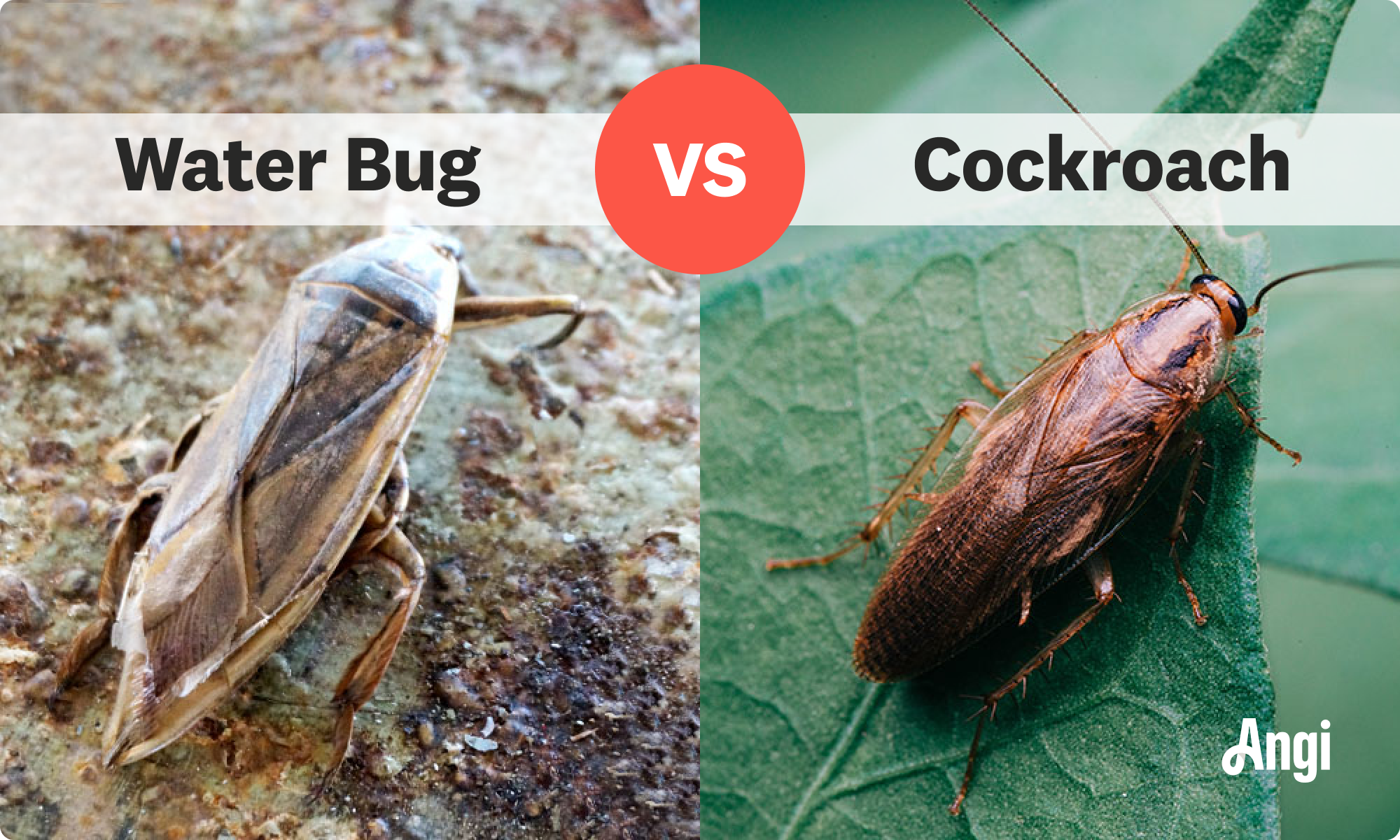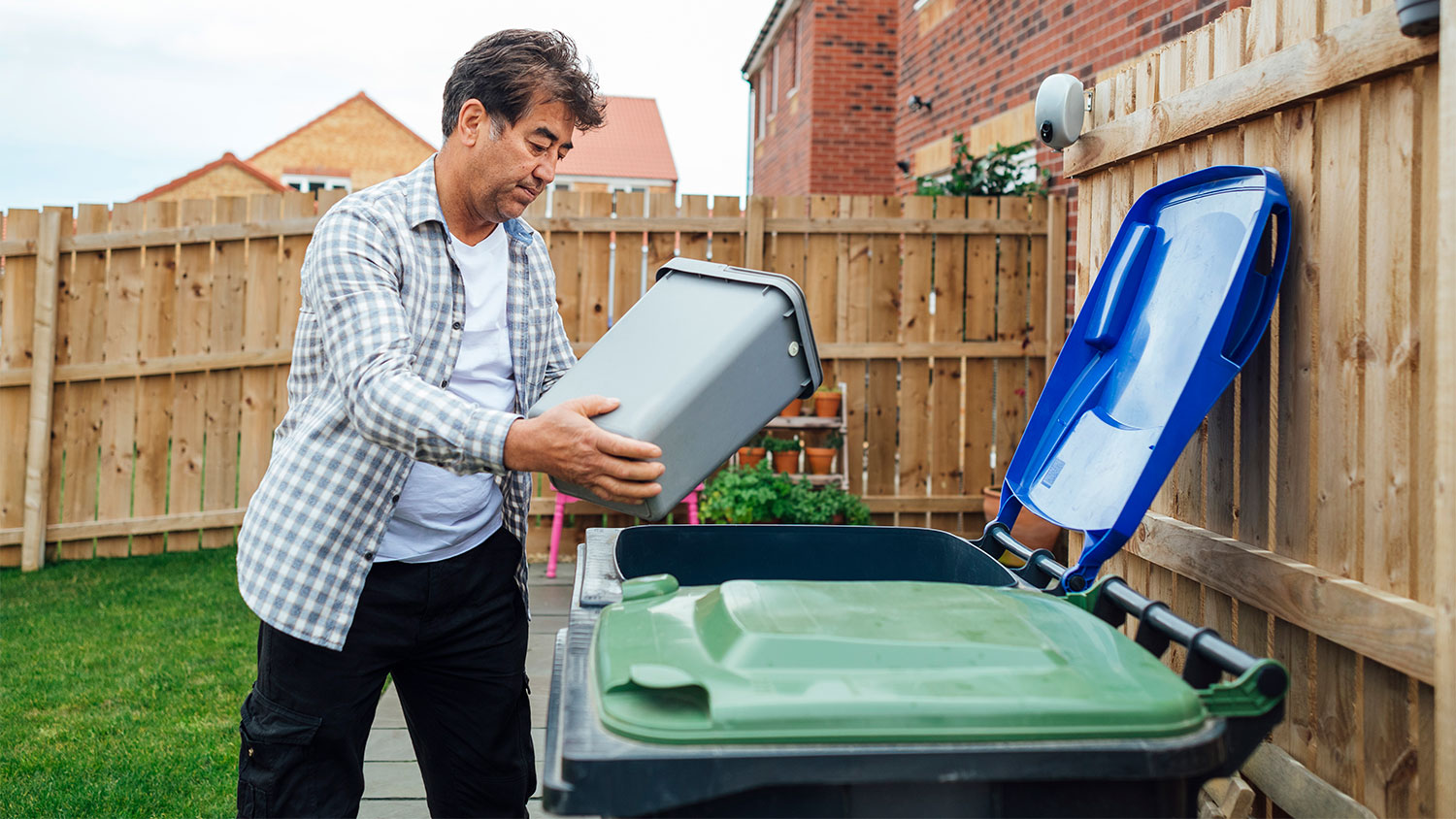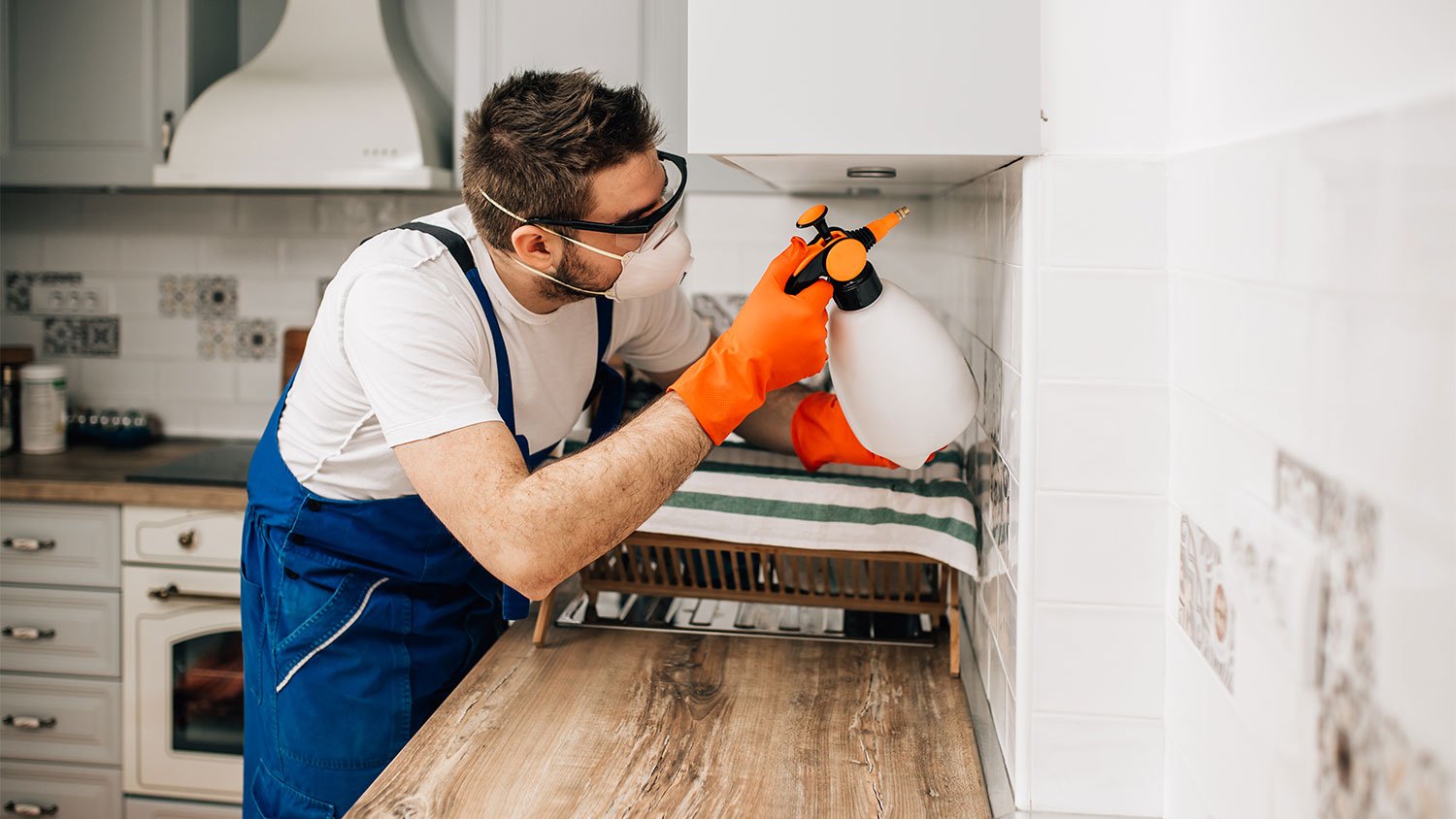
Whether you have bugs, bats, or rodents invading your home, you’ll want to contact an exterminator quickly. Find out how much pest control costs in Columbus, OH.
Send water bugs packing


There are few things more cringe-inducing than seeing a large, roach-like insect scuttling across your linoleum floors. In the blink of an eye, it’s gone. What was that thing, anyway? If you suspect it’s a water bug—a name bearing several interpretations—don’t panic.
Whether it’s a cockroach or an actual aquatic insect, there are ways to evict it from your residence. Here’s how to identify the type of squatter you’re up against and get rid of it instantly.
Not to be confused with smaller aquatic insects under the “water bug” umbrella (such as water striders, backswimmers, and the like), the “water bugs'' invading your home are most likely a type of cockroach. Specifically, the name “water bug” is often used as sort of a nickname to refer to the Oriental cockroach or the German cockroach (also called a Croton bug).
While far less common, you might also be looking at a giant water bug, a larger aquatic insect that’s roughly the size of a roach. They much prefer hanging out in lakes or ponds, but it’s still possible for them to end up in homes. If you’re near a body of water or even a swimming pool, this increases the likelihood.

Before you can work on killing the water bugs—and keeping them away for good—you’ll need to be certain what type of water bug is occupying your home. Start by looking at the different types of cockroaches that are common in your area. American cockroaches—often called palmetto bugs—are the most ubiquitous.
If you’re not convinced it’s a roach problem, here are the key distinguishing features between cockroaches and giant water bugs: Giant water bugs have large pinchers, while cockroaches have long antennae. Neither has both. Cockroaches are also usually about an inch long, oval-shaped, and dark brown to shiny black in color.

Giant water bugs are probably not trying to set up camp in your home, so no extermination efforts are necessary. Simply squash what you see and that should be the last of it.
Roaches, on the other hand, are much trickier and you’ll want to take action to get rid of them. Whether you want to DIY or hire a local exterminator, here’s what to do if you suspect a roach infestation.
The roaches had to have gotten in one way or another, and it’s crucial to learn where that is. Do a thorough walk-around of your home’s perimeter, sealing any cracks or openings you find with a silicone-based caulk. Pay special attention to the spaces around doors, windows, pipes, and utilities.
Whether you call them water bugs or cockroaches, these pests relish darkness, damp areas, and places to hide. They’ll also ransack food messes and open food containers, so it’s important to get rid of anything that could be feeding them.
If you’ve got stacks of papers, magazines, and other clutter, clear it away to eliminate the hangout spots. Next, wash and put away any dirty dishes and clean the house from top to bottom.
Roach-specific poisons and/or bait traps are often successful, but these can be extremely dangerous to have around your children or pets.
Boric acid is highly effective, natural, and much safer to have around your family and pets. However, it can still be toxic in large amounts, so it’s important to use it with caution. You can also opt for food-grade diatomaceous earth, an organic pest control method that’s safe to use around your pets.
When placing your traps and/or poison, focus your attention on areas where you’ve seen the most roaches. While most methods won’t kill a water bug instantly aside from poison (and even that can take a spray or three), it should be fairly quick. Bait will help you keep these pests away for good as well.
Place bait or traps in the following spots:
Underneath the fridge, dishwasher, microwave, and other kitchen appliances
Beneath the sink
Behind the toilet
Behind your TV/entertainment center
Inside drawers and cabinets
In areas of high moisture
Beneath your washer and dryer

Giant water bugs are confused travelers that aren’t interested in your home, so there’s not much to do on that front.
If your water bugs are roaches, though, these are the best ways to keep them away for good:
Keep all food items in sealed containers.
Avoid clutter and maintain a clean home.
Get garbage cans and recycling bins with tight-fitting lids.
Clean up food messes immediately.
Address moisture and plumbing leaks ASAP.

Identifying a roach problem, let alone addressing it, can be incredibly daunting. If you still aren’t sure what you’re dealing with, or you just want to get rid of the bugs, professional roach extermination costs between $100 and $300 on average. Get in touch with a local pest control service to get your home bug-free.
Roach poison will kill roaches on contact. If you’re using bait traps, boric acid, or diatomaceous earth, these will take longer, as the bugs have to find, contact, and ingest them first.
Cockroaches, aka water bugs, like to nest anywhere where it’s dark, dusty, and damp. You might find them inside interior walls, cabinets, or heating ducts. Kitchen and bathrooms in general are popular spots for nests as well.
Our office has a new lease on life, thanks to Custom Paint Jobs LLC. Outstanding work!
Window Depot did an amazing job on my deck. I wasnt sure what I wanted to do, but their composite decking was affordable and will last a long time. I am excited to have family over, and I am no longer embarrassed by my backyard. Jeff and the ground crew were polite, respectful, and caring for...
We used Unique Hardwood Floor LLC three years ago to work on the floors of a 70 year old home that needed a great deal of work. Some floors needed repairs, some were replaced and others just needed to be refinished. It was a complicated job as they needed to blend the old and the new to...
While Naaman and Mike were very professional and amicable to work with, there were issues in this project that makes giving a higher rating impossible. We had several communications issues that delayed completion. The roofers accessed the property without communicating with me. Just showed up...
They called 15 minutes before arrival to announce that they were coming and arrived on time. Immediately they saw the broken springs and replaced them very quickly. Jeff suggest that I put on a rope to the manual switch to operate it more easily if necessary. I explained that my old door...
We had the solar paneling installed over the summer and the folks from Ecohouse they had a very competitive bid. They were able to make recommendations on the siding, whether it would be a good idea to get solar. They did an excellent job with the installation. They also helped us arrange...
From average costs to expert advice, get all the answers you need to get your job done.

Whether you have bugs, bats, or rodents invading your home, you’ll want to contact an exterminator quickly. Find out how much pest control costs in Columbus, OH.

The invasive spotted lanternfly makes a mess and causes serious damage to the environment. So, how much does spotted lanternfly treatment cost?

If you need to get rid of bugs and pests making your home unsafe, it's time to decide if fumigation is necessary. Learn more about average fumigation costs.

Knowing how to get rid of mice in the walls involves taking preventative measures. Our DIY guide explains how to banish these rodents for good.

Roof rats can damage your home and potentially spread diseases and bacteria. Learn how to get rid of roof rats and keep them from coming back.

Foxes are opportunistic scavengers, so you don’t want to give them an excuse to park on your property. Learn how to keep foxes away from your yard.